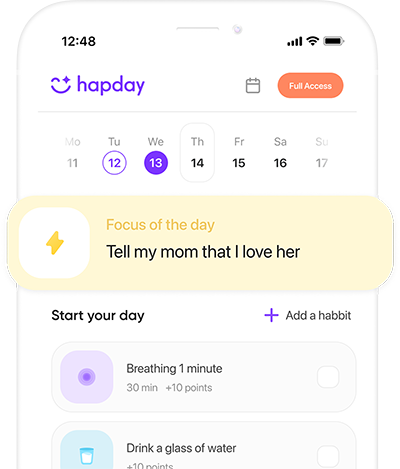Table of Contents
- Understanding ADHD and Procrastination
- The Science Behind ADHD Procrastination
- Emotional and Psychological Impact
- Strategies to Overcome ADHD-Induced Procrastination
- Personalized Strategies: Tailoring Solutions for Your Needs
- Conclusion
- References
Understanding ADHD and Procrastination
First off, ADHD isn’t your run-of-the-mill disorder; it’s a neurodevelopmental one—defined by inattention, hyperactivity, and impulsivity. You might be surprised to know that about 8.4% of kids and 2.5% of adults are navigating life with ADHD, according to the American Psychiatric Association. Procrastination is a real thorn in the side for many with ADHD, rooted in snags with executive functions like planning and organizing. Remember that time when my grocery list was longer than my arm and I still bought everything but what I needed? Yep, that’s ADHD for you.
The Science Behind ADHD Procrastination
Science time! Studies show that procrastination often rides shotgun with impaired executive function—remember those tasks that needed attention and order? Yeah, a Journal of Attention Disorders study points out that folks with ADHD face significant delays there. Turns out, the prefrontal cortex, the brain’s executive suite, may be lazier than we’d like in those with ADHD, leading to habitual lateness. It feels like being perpetually stuck in mud.
Emotional and Psychological Impact
Letting procrastination run wild can wreak havoc emotionally and psychologically. We’re talking about stress, anxiety, and the unwelcome guest, depression. It starts a vicious cycle: delay, stress, scramble—rinse and repeat. Not exactly a recipe for a happy self-esteem, right? A 2016 Journal of Behavioral Decision Making study showed that procrastinators can end up stranded in a sea of stress… let’s spare ourselves that loneliness.
Strategies to Overcome ADHD-Induced Procrastination
Trust me, getting unstuck requires more than just waving a magic wand. It needs a mix of behavioral strategies, cognitive shifts, and maybe, some therapeutic or medicinal support. Roll up your sleeves, it’s time to dive into some science-backed solutions.
1. Prioritization and Planning
Planning and prioritization—sounds simple, yet often overlooked. Creating a detailed plan can help direct a wandering mind to what truly matters.
The Eisenhower Box
This is a nifty time-management helper, let me tell you. The Eisenhower Box divides tasks by urgency and importance, into four neatly arranged quadrants. I once sorted my tasks using those four labels and, surprise, found my efforts more strategic and less haphazard.
SMART Goals
Then there’s SMART goals—specific, measurable, achievable, relevant, time-bound. These babies transform chaos into clarity. A study in the Journal of Business and Psychology even found that pinning down specific goals ramps up motivation and performance. Feels nice to be validated by science, right?
2. Breaking Tasks into Smaller Steps
Huge tasks often feel like you’re scaling Mount Everest without a sherpa. Break them into bite-sized chunks; they become far less daunting.
The Pomodoro Technique
Enter the Pomodoro Technique, breaking work into 25-minute sprints separated by breaks. It helps maintain focus and productivity—trust me, I’ve used it during crunch time, and boy, did it save my sanity.
3. Environmental Modifications
Your environment makes a big difference—create a space that whispers “focus” rather than shouts “distraction!”
Minimizing Distractions
Trim those distractions down. Think apps that block websites more addictive than your Aunt’s cookies or putting your phone on “do not disturb.” These little saviors help maintain that elusive concentration.
Organizing Workspace
A jumbled workspace is a gateway to a cluttered mind. Keeping things neat and organized can brighten mental clarity. A Journal of Environmental Psychology study even says so. Try it—it really can change the game.
4. Cognitive Behavioral Techniques
These techniques can flip your thinking patterns, reducing procrastination by tackling those sneaky underlying thoughts head-on.
Reframing Negative Thoughts
Reframing helps you change your perspective. That dreaded task? Flip it—view it as a chance to grow. Cognitive restructuring is a technique in Cognitive Behavioral Therapy that transforms those negatives.
Self-Compassion Exercises
Nurturing self-compassion boosts motivation and resilience. The Mindfulness journal found that self-compassion pairs with reduced procrastination. A gentle reminder to be kinder to ourselves can go a long way.
5. Leveraging Technology and Apps
In this age of gadgets, technology isn’t just for fun—it’s a serious ally against procrastination.
Task Management Apps
Todoist, Asana—they’re ready to organize tasks and pepper in reminders that keep you on track. These apps are almost like personal assistants without the hefty salary.
Focus-Enhancing Tools
Apps like Forest or Freedom help keep distractions at bay, rewarding you for every concentrated effort. Think of them as digital taskmasters with heart.
6. Professional Support
Sometimes, a little help goes a long way. Seeking professional support could be your ticket to effectively managing ADHD-induced procrastination.
Cognitive Behavioral Therapy (CBT)
CBT’s been tested, tried, and lauded for managing ADHD and curbing procrastination. A 2018 meta-analysis in the Journal of Psychopathology and Behavioral Assessment underlines CBT’s effectiveness. I’m all for solutions rooted in research.
Medication
In some cases, medication steps in to manage ADHD symptoms. Stimulants like methylphenidate or non-stimulants like atomoxetine can lend a helping hand. Always, always consult with a healthcare professional before diving into medication waters.
Personalized Strategies: Tailoring Solutions for Your Needs
No two people are alike, and neither should their procrastination-busting strategies be. Tailor these tips to fit you and your lifestyle like a comfy, custom-tailored suit.
Assessing Personal Triggers
Knowing what triggers procrastination is half the battle. Keep a journal—spot those patterns when recurring procrastination knocks.
Building a Support System
A support system uplifts and holds you accountable. Whether it’s friends, family, or a group, their encouragement can be a lifeline in the battle against procrastination.
Continuous Reflection and Adjustment
Reflect and tweak your tactics regularly. Are they working? Are they not? Embrace the chance to adapt and evolve, always striving for that sweet spot of productivity.
Conclusion
Shaking free from the shackles of ADHD-induced procrastination demands understanding, strategy, and a personal touch. Sweet-talking your way through prioritizing, planning, breaking things down, altering your environment, leaning on cognitive science, embracing technology, and reaching out for professional help—all of these pave the way. Remember, it’s all about progress not perfection. Celebrate those small wins and foster that self-kindness!
And hey, for more on managing ADHD and boosting productivity, check out Hapday, a quintessential tool designed to bolster your journey. With Hapday, you’re never alone in this fight.
References
- American Psychiatric Association. (2013). Diagnostic and statistical manual of mental disorders (5th ed.).
- Journal of Attention Disorders.
- Journal of Behavioral Decision Making.
- Journal of Business and Psychology.

